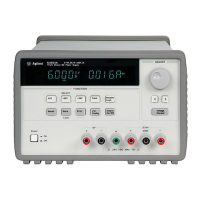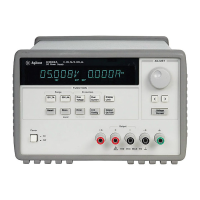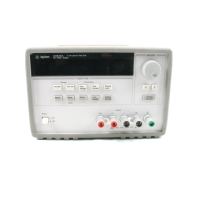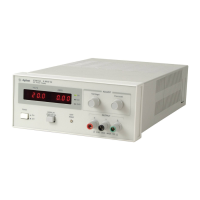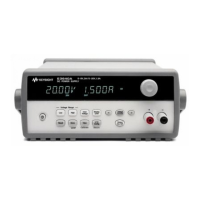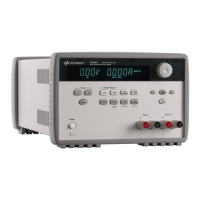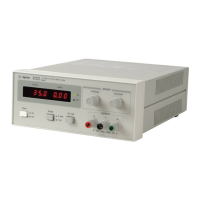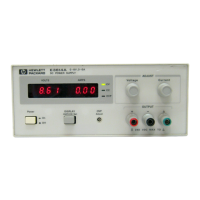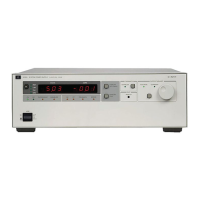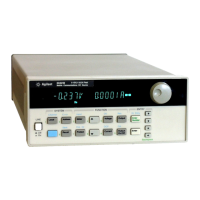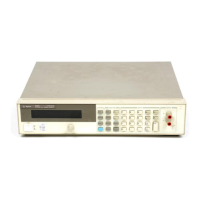Chapter 4 Theory of Operation
A-to-D Converter
91
4
A-to-D Converter
Referring to the schematic shown on page 131, the analog-to-digital converter
(ADC) is used to change dc voltages into digital information. The circuitry
consists of an integrator amplifier (U25 and U28), current steering switch U32,
resistors (R72, R73, and R98), voltage reference U31, ADC controller U20, and
residue ADC in U19.
The ADC method used by the power supply is called multislope III. Multislope
III is a charge balancing continuously integrating analog-to-digital converter.
The input voltage continuously forces charge onto the integrator capacitors
C50 and C52 through R73.
Switch U32 steers fixed positive or negative reference currents onto the
integrator capacitors to cancel, or balance the accumulated input charge. The
le ve l s hi ft ed ( R9 9 a nd R1 00 ) ou tp ut o f t h e i nt eg ra to r i s c hec ke d e ve ry 2 .66 ms ec
by the U20 COMP input. Logic state machines in U20 control the U32 current
steering to continuously seek an approximate 2.5 V level on the integrator
amplifier output, FLASH. If the ADC input voltage is between ±15 V, the
integrator output (FLASH) will remain within the 0 V to 5 V range of the U19
on-chip ADC. The U19 ADC input (FLASH) is clamped to 0 V or 5 V by R47 and
CR14 to protect U19.
The integrator amplifier is formed by U25 and U28. Resistors R60 and R61
affect the amplifier stability. Amplifier oscillation may occur if their values are
incorrect. Amplifier U28 improves the offset voltage characteristics of
integrator amplifier U25.
Each analog-to-digital conversion occurs continuously. The ADC starts by
clearing the integrator slope count in U20. At the end of the integration period,
the slope count is latched. The slope count provides the most significant bits
of the input voltage conversion. The least significant bits are converted by the
on-chip ADC of U19.
U40 provides a stable +5 V reference voltage for ADC. U31A amplifies the
voltage reference to +10 V while amplifier U31B inverts the +10 V reference to
-10 V. The reference voltage forces precision slope currents for the integrating
ADC through R72 and R98.
